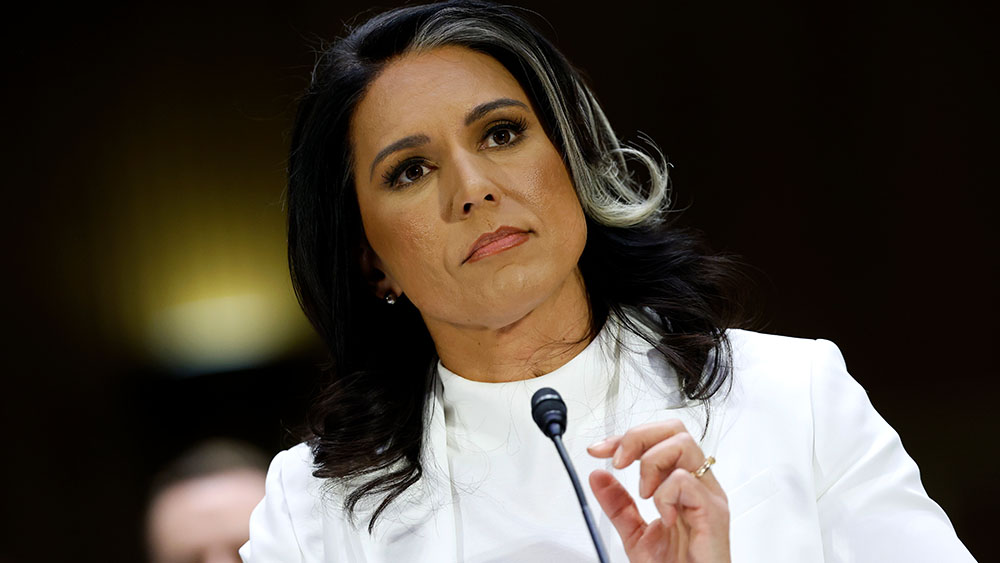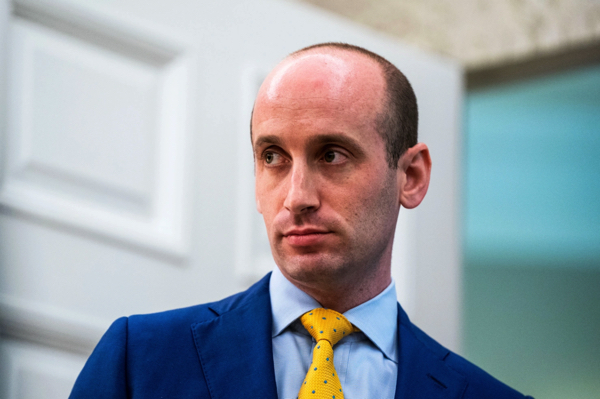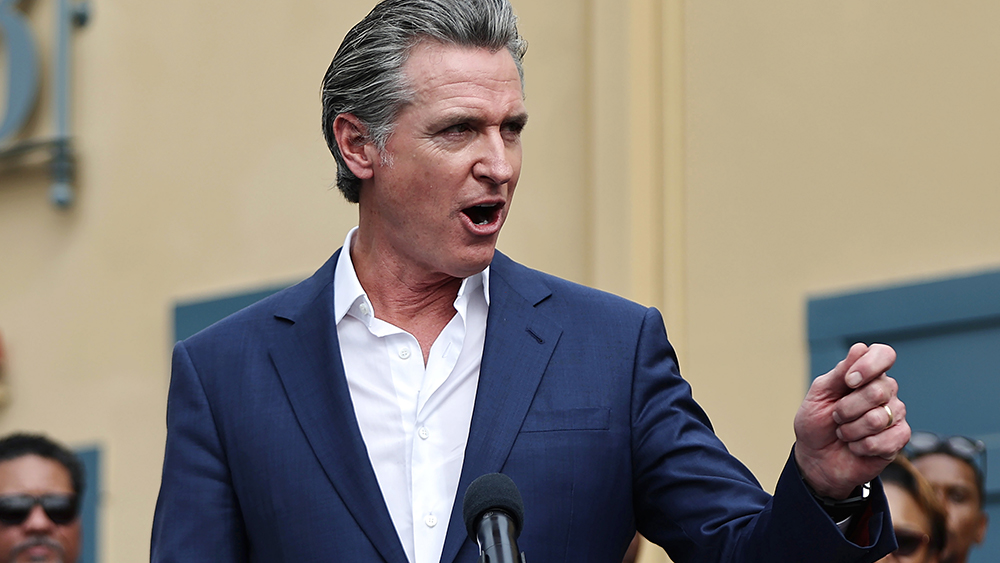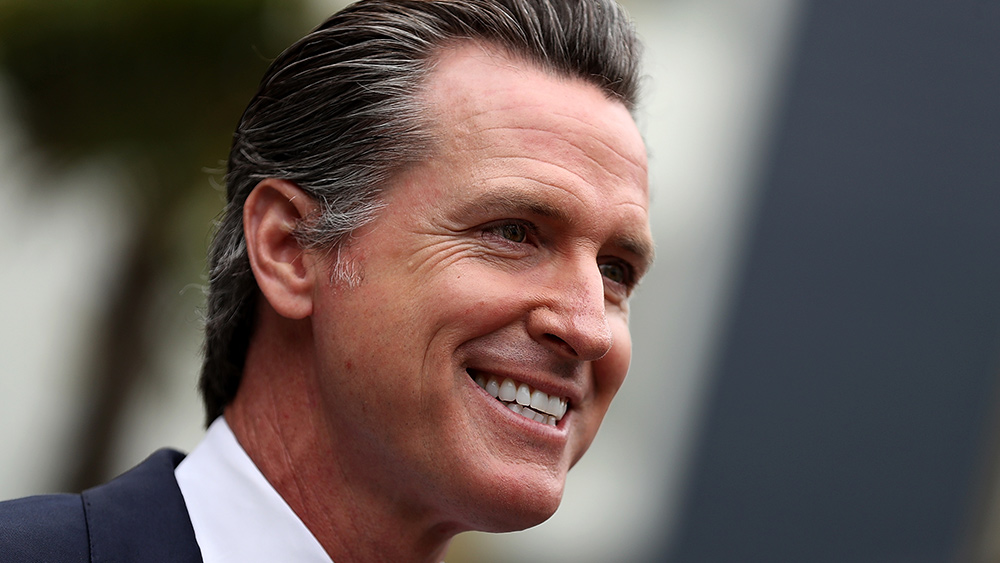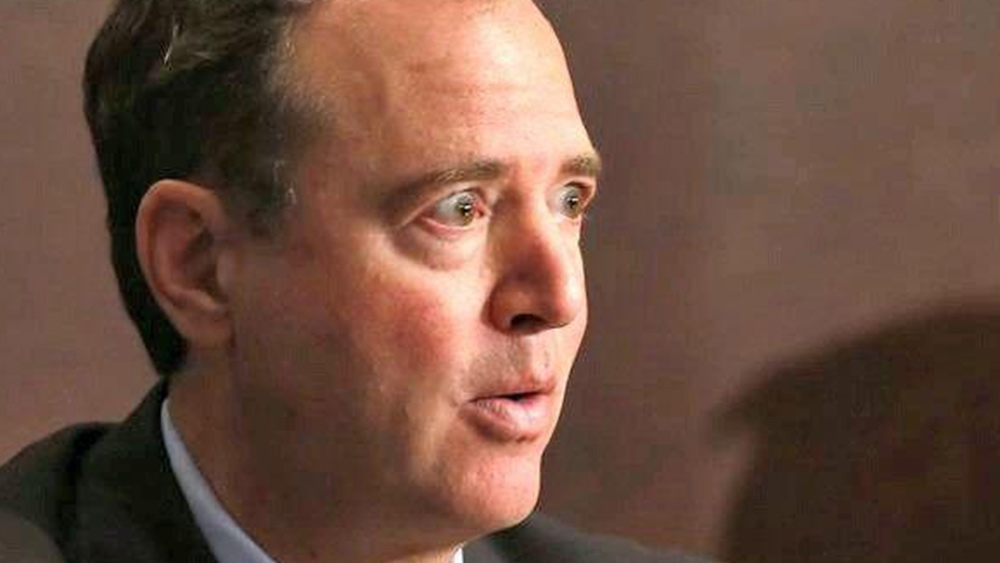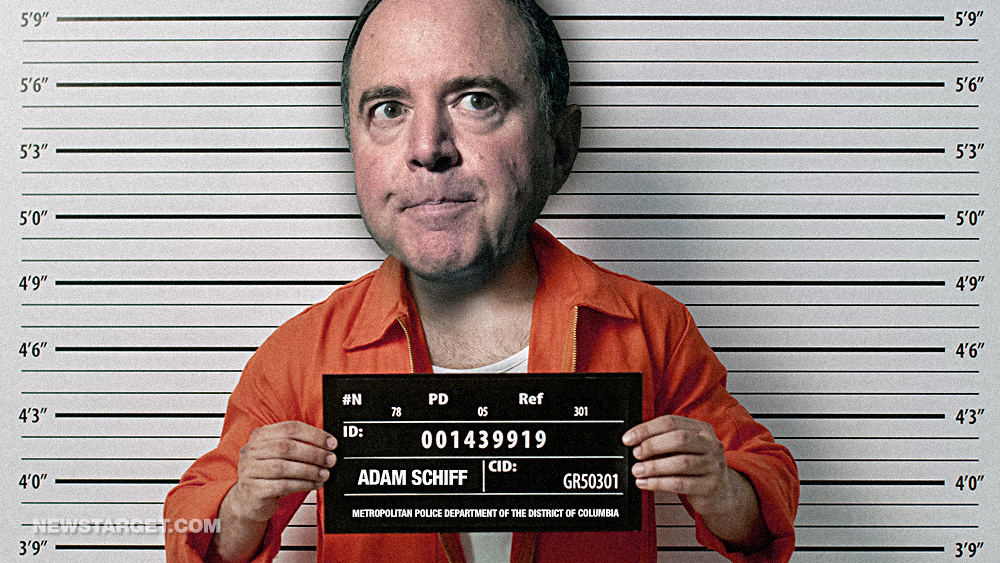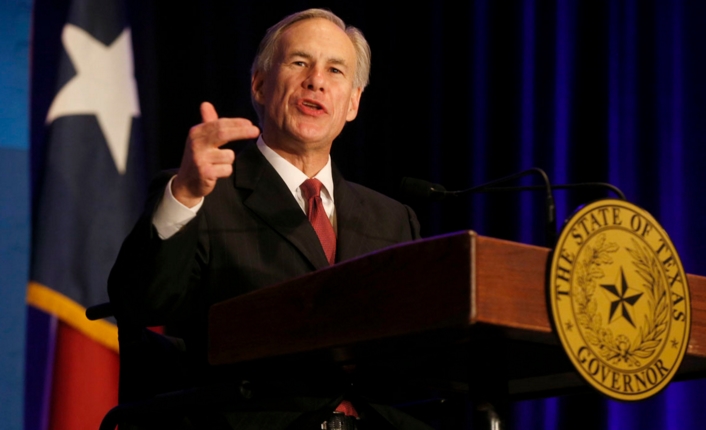Security clearances revoked for 37 Biden/Obama officials as Gabbard targets “weaponized intelligence”
08/22/2025 / By Willow Tohi
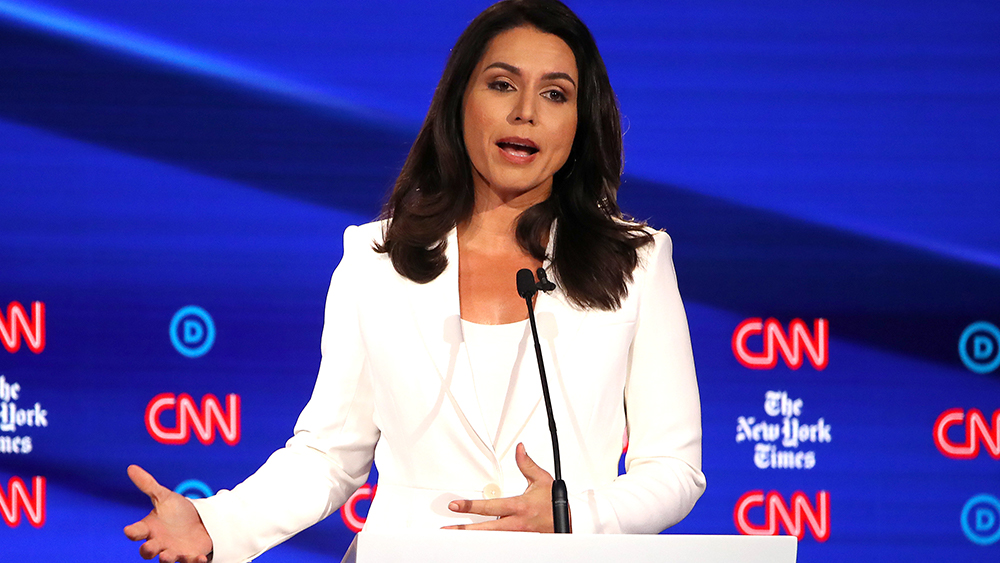
- The administration revoked clearances for 37 officials, mostly from Obama and Biden-era roles, accusing them of “weaponizing intelligence” and “selling secrets.” Critics, including Democrats, call the move politically motivated and a distraction from Trump’s legal battles and Epstein scandals. Gabbard defends it as upholding accountability, emphasizing clearances are privileges, not rights.
- Gabbard aims to declassify documents detailing the Biden administration’s domestic surveillance and censorship strategy, allegedly targeting health freedom advocates and the “Disinformation Dozen.” Critics, including Democrats, oppose the move, arguing it endangers sources and fuels partisan narratives. Gabbard frames it as ending “black ops” tactics against dissent, though past leaks (e.g., 2016 election claims) have drawn accusations of politicization.
- Gabbard’s restructuring faces bipartisan backlash. Republicans like Tom Cotton support her “anti-bloat” agenda, while Democrats (e.g., Mark Warner) decry it as destructive to national security and rooted in her history of politicizing intelligence (e.g., prior accusations of an Obama-era “coup”). The debate reflects broader ideological clashes over whether reforms prioritize efficiency or destabilize institutions.
- Analysts warn reforms risk weakening response to global threats (e.g., cyberattacks, pandemics) and deepening public distrust in agencies politicized under Trump and Biden. The struggle pits Gabbard’s vision of nonpartisan transparency against fears that rushed declassification and cuts could harm national security, leaving America’s intelligence community at a crossroads between unity-driven reform and partisan collapse.
Tulsi Gabbard has slashed U.S. intelligence staffing by 40 percent, targeting “bloat” and pledging a savings of $700 million annually. Targeted are agencies like the Foreign Malign Influence Center — which monitored foreign election interference — and the Cyber Threat Intelligence Integration Center, both deemed redundant. The National Intelligence University will also merge with the Pentagon’s National Defense University. “The ODNI has become so bloated over two decades that its mission to provide objective intelligence has been overshadowed,” Gabbard stated on Wednesday.
Critics, however, argue the restructuring risks hollowing out critical oversight functions. The Strategic Futures Group, which analyzed long-term global trends, and the External Research Council, accused of liberal bias, face elimination. Senate Intelligence Committee Chairman Tom Cotton (R-AR) hailed the move as returning the agency to its “lean, mission-focused” roots, while Democratic Senator Mark Warner (VA) dismissed it as politicized overreach.
Security clearance revocations stir controversy
Hours before revealing staffing cuts, the administration announced revocation of clearances for 37 officials, predominantly Obama-era figures. Gabbard accuses them of “weaponizing intelligence” and “selling secrets for political power,” citing unnamed violations. Among those impacted are former Biden-Biden and Obama-era aides and National Security Council members.
The move mirrors earlier revocations, including those of Biden himself and lawmakers tied to the Capitol riot investigation. Gabbard defended the action, stating: “Security clearances are a privilege, not a right. Those who betray trust forfeit its benefits.” Critics, including Democratic lawmakers, called the memo “bogus narratives” deflection from Trump’s legal challenges and Epstein scandals.
Transparency and Biden-Era censorship: The declassification gambit
Gabbard’s reforms amplify a parallel effort to declassify documents allegedly detailing the Biden administration’s “domestic terrorism strategy,” which reportedly targeted health freedom advocates, labeled the “Disinformation Dozen,” with surveillance. While unconfirmed by official sources, Gabbard framed this as ending “black ops” tactics weaponized against dissent.
The director has previously released documents alleging Biden allies engaged in a “treasonous conspiracy” against former President Trump over 2016 election interference claims. Democrats condemned such leaks as endangering sources and derided the “Disinformation Dozen” claims as baseless.
Historical context: Intelligence reforms amid political wars
ODNI, established post-9/11 to unify disjointed agencies, has long faced calls for leaner operations. Yet critics argue Gabbard’s reforms lack bipartisanship. Trump’s “deep state” rhetoric now operationalized contrasts sharply with post-9/11 bipartisan consensus on centralized intelligence.
Senator Warner highlighted “grave misgivings” about Gabbard’s “history of politicization,” referring to her January declassification accusing Obama officials of a “years-long coup.” Gabbard, however, insists her mission is nonpartisan: “We’re reigniting the Constitution’s promise — one that doesn’t weaponize intelligence against its people.”
A divided path ahead
With staffing cuts advancing and declassification battles looming, Gabbard’s vision of overhauling the intelligence community has ignited a partisan firestorm, pitting reform-minded Republicans against Democrats who warn of destabilizing national security. At its core, this debate reflects a broader ideological rivalry: Who controls the narrative of American democracy? As leaks, reforms and political posturing dominate headlines, the Office of the Director of National Intelligence (ODNI) faces a precarious future — one where public trust in its mission hangs on the outcome.
Gabbard, a vocal advocate for bureaucratic streamlining, argues that ODNI’s current structure perpetuates inefficiency and institutional rivalry. Her plan to eliminate at least 10 percent of ODNI’s workforce — roughly 1,500 positions — targets redundancies in administrative and duplicated roles, redirecting focus toward core functions: gathering, analyzing and sharing intelligence. Critics, however, argue that such cuts risk leaving critical gaps. Former intelligence officials warn that slashing staff could jeopardize responsiveness to emerging threats like cyberattacks or global pandemics, especially as adversaries accelerate their own surveillance capabilities. Meanwhile, reform advocates counter that bloated ODNI bureaucracies, or “staff blubber,” squander resources and fuel infighting instead of overcoming long-standing silos between agencies like the CIA and FBI.
Gabbard’s declassification drive intensifies partisan tensions
The battle over declassification further sharpens partisan divides. Gabbard’s push to codify reforms coincides with demands to release sensitive documents tied to high-profile domestic incidents, such as the January 6 Capitol riot. Republicans have aggressively called for transparency, framing declassification as a matter of accountability, while Democrats invoke security concerns, fearing misinformation could distort historical contexts or expose classified sources. Some legal experts caution that rushed declassification could undermine decades of intelligence protocols, creating avenues for adversaries to exploit gaps in storytelling.
Stovepiping — the dangerous practice of withholding information between agencies — remains central to Gabbard’s argument. Critics cite the aftermath of 9/11, where fragmented intelligence crippled critical systems, as evidence of the human and strategic costs of secrecy. Stovepiping resurfaced in the 2016 election controversy, when warnings about Russian interference were reportedly underreported across agencies. Gabbard’s proposal demands technology-driven solutions, such as shared cloud platforms, to eliminate barriers, but opponents argue that trust, not tools alone, is the linchpin.
Partisan crossroads: Can intelligence reform cure the “swamp” without eroding trust—and democracy?
Republicans frame the reforms as necessary to curb a “swamp-driven” bureaucracy, while Democrats counter that dismantling ODNI’s capacity risks echoing past failures. Senator John Doe (D-CA), an intelligence committee member, recently warned that cutting staff could “erase institutional memory.” Conversely, Representative Jane Smith (R-TX) echoed Gabbard’s view: “We’re not downgrading safety — we’re excising tumors.”
Public confidence remains a casualty in this stalemate. Polls show declining trust in the intelligence community, exacerbated by polarized leaks and administrations treating agencies as political weapons — a trend accelerated during the Trump and Biden eras. If reforms fail, analysts fear ODNI will remain a locus of partisan blame. If successful, Gabbard’s plan could redefine how intelligence serves democracy — though critics argue the cure might prove as harmful as the disease. As both sides maneuver, the nation watches whether unity or division will shape the future of America’s watchmen.
Sources for this article include:
Submit a correction >>
Tagged Under:
Biden, big government, cancel Democrats, Censorship, conspiracy, corruption, deception, deep state, DNI, Gabbard, intelligence, national security, Obama, politics, progress, surveillance, traitors, treason, Trump, Tulsi Gabbard
This article may contain statements that reflect the opinion of the author
RECENT NEWS & ARTICLES
COPYRIGHT © 2018 JUSTICEDEMOCRATS.NEWS
All content posted on this site is protected under Free Speech. JusticeDemocrats.news is not responsible for content written by contributing authors. The information on this site is provided for educational and entertainment purposes only. It is not intended as a substitute for professional advice of any kind. JusticeDemocrats.news assumes no responsibility for the use or misuse of this material. All trademarks, registered trademarks and service marks mentioned on this site are the property of their respective owners.

